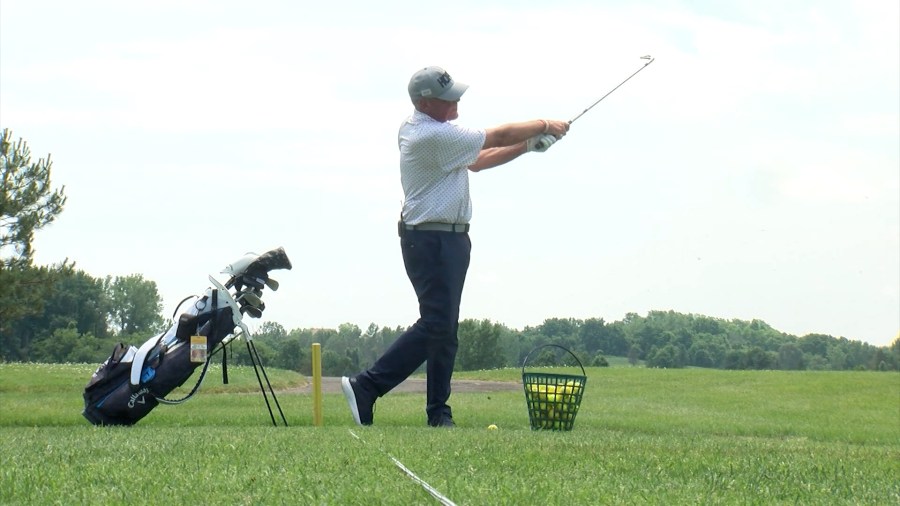
Golf isn't always about unleashing the full power of your swing. Sometimes, dialing it back can actually unlock a wider range of shot options and improve your game. The key is understanding how to control your swing and adapt to different situations on the course.
The Power of the "In-Between" Club
Have you ever found yourself stuck between clubs, unsure whether to overpower a shorter club or under-swing with a longer one? Here’s a strategy to consider: Instead of forcing a full swing with a weaker club, opt for the stronger club. For example, if you're tempted to max out a 7-iron to reach the green, try a 6-iron instead.
Choking Down and Adjusting Your Stance
The next crucial step is to "choke down" on the club. This means gripping the club lower on the handle than usual. However, simply choking down can throw off your distance to the ball. To compensate, subtly adjust your stance by standing slightly closer to the ball. This adjustment ensures you maintain a comfortable and balanced setup.
Executing the Controlled Swing
Now for the swing itself. The goal is to take what feels like your normal, fullest swing, but with a crucial modification: focus on a complete follow-through while preventing an overly upward motion. Think of driving through the ball, maintaining a lower trajectory, rather than trying to lift it into the air.
Why This Works: Controlling Loft and Trajectory
This technique effectively reduces the loft of the clubface at impact. By coming down and through the ball with a controlled motion, you're essentially "shutting down" the angle of the clubface. This results in a lower trajectory, which can be particularly beneficial in windy conditions or when you need to keep the ball under tree branches.
Practice Makes Perfect: Incorporating the Technique
Like any golf skill, mastering this controlled swing requires consistent practice. Aim to incorporate it into your practice routine two to three times a week. This dedicated practice will allow you to dial in your yardages and understand how the ball flies with this modified swing. Remember, it's not a technique to be used sporadically; consistent practice is essential for developing proficiency.
A Temporary Fix or a Long-Term Strategy?
Sometimes, even with practice, your usual swing just isn’t working for you on a particular day. This controlled swing technique can also serve as a temporary "Band-Aid." If you're struggling with your 7-iron, for example, switching to a choked-down 6-iron with a controlled swing might help you regain some consistency and get you through the round.
However, if you find yourself consistently relying on this technique to compensate for issues with your regular swing, it's a sign that you should head to the driving range and address the underlying problems. Consider seeking guidance from a golf professional to diagnose and correct any flaws in your technique.
Getting Back in Rhythm
The beauty of this technique is that it can help you regain your rhythm. Sometimes a minor change in your swing can put you back on track.
The Takeaway
The controlled swing is a valuable tool in any golfer's arsenal. It provides a solution for "in-between" distances, helps manage trajectory, and can even serve as a temporary fix when your regular swing falters. By understanding the principles behind it and dedicating time to practice, you can unlock a new level of control and consistency in your game.
Post a Comment for "WNY PGA: Unlock Your Potential by Closing Down"